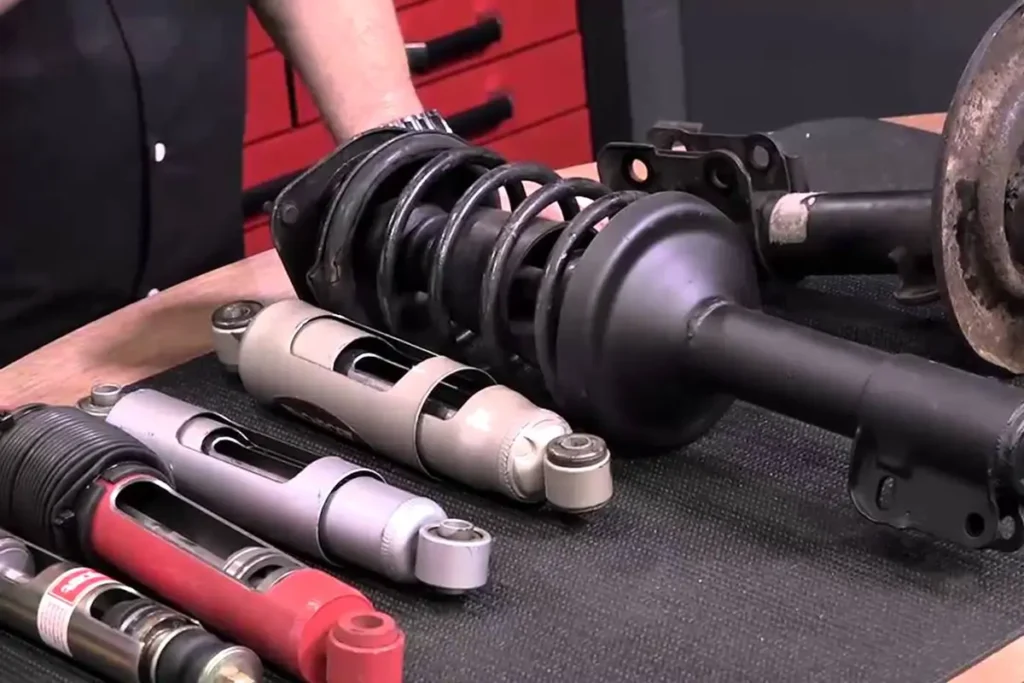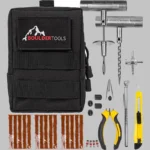Ever driven down a bumpy road and wondered why your car didn’t turn into a rattletrap? That’s the magic of shocks and struts at work. These unsung heroes of your vehicle’s suspension system keep your ride smooth and your tires hugging the road. But, let’s be honest, shocks and struts are terms that often get tossed around like interchangeable parts. They’re not the same, though, and knowing the difference can make a world of difference when it’s time for a repair or replacement.
What Are Shocks?
Shocks, or shock absorbers, are like the shock-absorbing sneakers of your car’s suspension system. They don’t carry the weight of the vehicle; instead, they manage the bouncing and rebounding of the car as it goes over bumps. Imagine you’re on a trampoline. Without shocks, every little bump would send you bouncing uncontrollably. Shocks dampen that bounce.
How Do Shocks Work?

Shocks work by turning kinetic energy (the energy of movement) into heat energy, which is then dissipated. Inside the shock absorber, you’ll find a piston moving through oil-filled chambers. When your car goes over a bump, the piston pushes through the oil, which resists the motion and slows down the bouncing of the car.
Types of Shocks
Here’s a quick breakdown:
- Twin-Tube Shocks: These are common in many vehicles and offer a good balance of comfort and control.
- Monotube Shocks: A bit more advanced, these provide better heat dissipation, making them a favorite for performance enthusiasts.
- Coil-Over Shocks: These combine a shock absorber and coil spring into one unit. They’re adjustable and often used in racing.
Signs Your Shocks Need Replacing
Shocks don’t last forever. If you notice that your car keeps bouncing after hitting a bump, or if there’s fluid leaking from your shocks, it’s time to consider a replacement. Uneven tire wear is another dead giveaway.
What Are Struts?
Struts do double duty. Not only do they absorb shocks like shock absorbers, but they also provide structural support for the vehicle’s suspension system. Imagine a table leg—it holds up the table while keeping it stable. That’s your strut. They’re essential for maintaining the alignment of your car.
How Do Struts Work?
Struts are a bit more complex than shocks. They consist of several parts, including the shock absorber itself, a coil spring, and a variety of other components like the spring seat, strut bearing, and steering knuckle. Together, these parts help support the vehicle’s weight, absorb bumps, and maintain the car’s alignment.
Types of Struts
There are a few types of struts you might encounter:
- MacPherson Strut: The most common type, used in many modern vehicles. It’s a compact, efficient design that combines a shock absorber and a coil spring into a single unit.
- Gas Strut: These are filled with gas (usually nitrogen) to help reduce the chance of oil foaming, which can affect the performance of the strut.
- Coil-Over Strut: Similar to coil-over shocks, these are often used in performance vehicles and can be adjusted to fine-tune the vehicle’s handling.
Signs Your Struts Need Replacing
Struts typically last longer than shocks, but they do wear out. If your car pulls to one side, bounces excessively, or if you hear strange noises when driving over bumps, your struts might be on their last legs. Also, look out for uneven tire wear.
Key Differences Between Shocks and Struts
It’s easy to confuse shocks and struts, but they’re not the same. Here’s a closer look at what sets them apart:
| Feature | Shocks | Struts |
|---|---|---|
| Function | Absorb and dampen the vehicle’s movement | Provide structural support and absorb shocks |
| Structure | Standalone component | Integral part of the suspension system |
| Cost | Typically less expensive | Usually more costly due to complexity |
| Replacement | Easier to replace | More complicated and labor-intensive |
| Impact on Alignment | No effect on alignment | Directly affects vehicle alignment |
| Usage | Common in the rear of vehicles | Typically used in the front suspension |
When to Replace Shocks vs. Struts
Both shocks and struts have a finite lifespan, typically ranging between 50,000 and 100,000 miles depending on your driving habits and road conditions. But how do you know when it’s time to replace them?
- Shocks: Look for signs like excessive bouncing after hitting a bump, nose-diving when braking, or leaking fluid. Also, pay attention to any unusual noises while driving.
- Struts: Struts are a bit trickier because they also affect the vehicle’s alignment. If your car starts pulling to one side, if the steering feels loose, or if you hear clunking sounds over bumps, it’s time to get your struts checked.
DIY vs. Professional Replacement
Replacing shocks can be a DIY project for the mechanically inclined, but struts are another story. Because they’re part of the suspension system and affect alignment, strut replacement is best left to professionals unless you’re an experienced mechanic.
How to Choose Between Shocks and Struts
Choosing the right shocks or struts isn’t just about picking a brand. It’s about matching the part to your vehicle and your driving style.
- Vehicle Considerations: Make sure you choose parts that are compatible with your vehicle’s make and model. Consult your vehicle’s manual or a trusted mechanic if you’re unsure.
- Driving Style: If you’re a weekend racer, you might prefer performance shocks or struts. If you’re driving a family sedan, comfort might be your top priority.
- Brand Recommendations: Monroe, Bilstein, and KYB are reputable brands that offer a range of options for different vehicles and driving conditions.
Common Myths About Shocks and Struts
There’s a lot of misinformation out there about shocks and struts. Let’s clear up a few common myths:
- Myth 1: Shocks and Struts Are the Same Thing: This is probably the biggest misconception. As we’ve discussed, they serve different purposes and are not interchangeable.
- Myth 2: You Only Need to Replace Shocks/Struts on One Side: Always replace shocks and struts in pairs. Replacing just one can lead to uneven handling and instability.
- Myth 3: All Shocks and Struts Are the Same: Not true. There are different types with different characteristics, so it’s important to choose the right one for your vehicle.
Frequently Asked Questions
Can you replace shocks with struts or vice versa?
No, shocks and struts are not interchangeable. Your vehicle is designed to use one or the other, and they’re not cross-compatible.
How do I know if my car has shocks or struts?
Check your vehicle’s manual, or have a look under your car. Struts are usually mounted on the front suspension, while shocks can be found on both the front and rear, depending on the vehicle.
What happens if I don’t replace worn shocks or struts?
Worn shocks or struts can lead to a bouncy ride, poor handling, and increased stopping distances. Over time, they can also cause uneven tire wear and damage to other suspension components.
Conclusion
Understanding the difference between shocks and struts is key to maintaining your vehicle’s performance and safety. Whether you’re cruising down the highway or tackling a winding back road, these components keep your ride smooth and your wheels firmly planted. So, next time your mechanic says it’s time for a replacement, you’ll know exactly what they’re talking about.

Matthew Dowell
Matthew, a seasoned builder from a family of craftsmen, leads Tools Trove. His passion for tools and decades of hands-on experience fuel his commitment to providing expert reviews and insightful content. Whether you’re a pro or a DIY enthusiast, Matthew’s guidance ensures informed decisions in the world of tools.




